Today in Poland, people like Robert Lewandowski are not counted on. It is a systemic mistake
We complain that Polish football lacks creative and technical players. Meanwhile, our children are not born worse. There is no shortage of talent. It's just that they are being killed by coaches with an overgrown ego, whose goal is to win a match or the junior league. That is why instead of fast, technical players, they focus on physically strong ones. PZPN research clearly shows that this is a mistake. It is worth betting more boldly on players who mature late and those from the end of the year, because this will not only provide quality but also real financial profits.
Valery Lobanovsky used to say that footballers are born of different heights. This is a sentence that most coaches in Poland have not read. How many times has a parent of a young footballer heard that their child does not have the physical skills? That they are too small to play football? How many times has he been frustrated to see his child lose a competition to a bigger and stronger boy because the coach had to win a local derby in an under-13 match? Parents of smaller children know exactly what I am talking about. However, research shows that placing a lot of emphasis on late-maturing players and players from the end of the year pays off much more.
The Polish Football Association has just sent the so-called "future" team under 16 to a match with peers from Belgium. Marcin Dorna, the association's director of national teams, notes that we need to be bold in choosing so-called late maturing boys, because the future belongs to them.
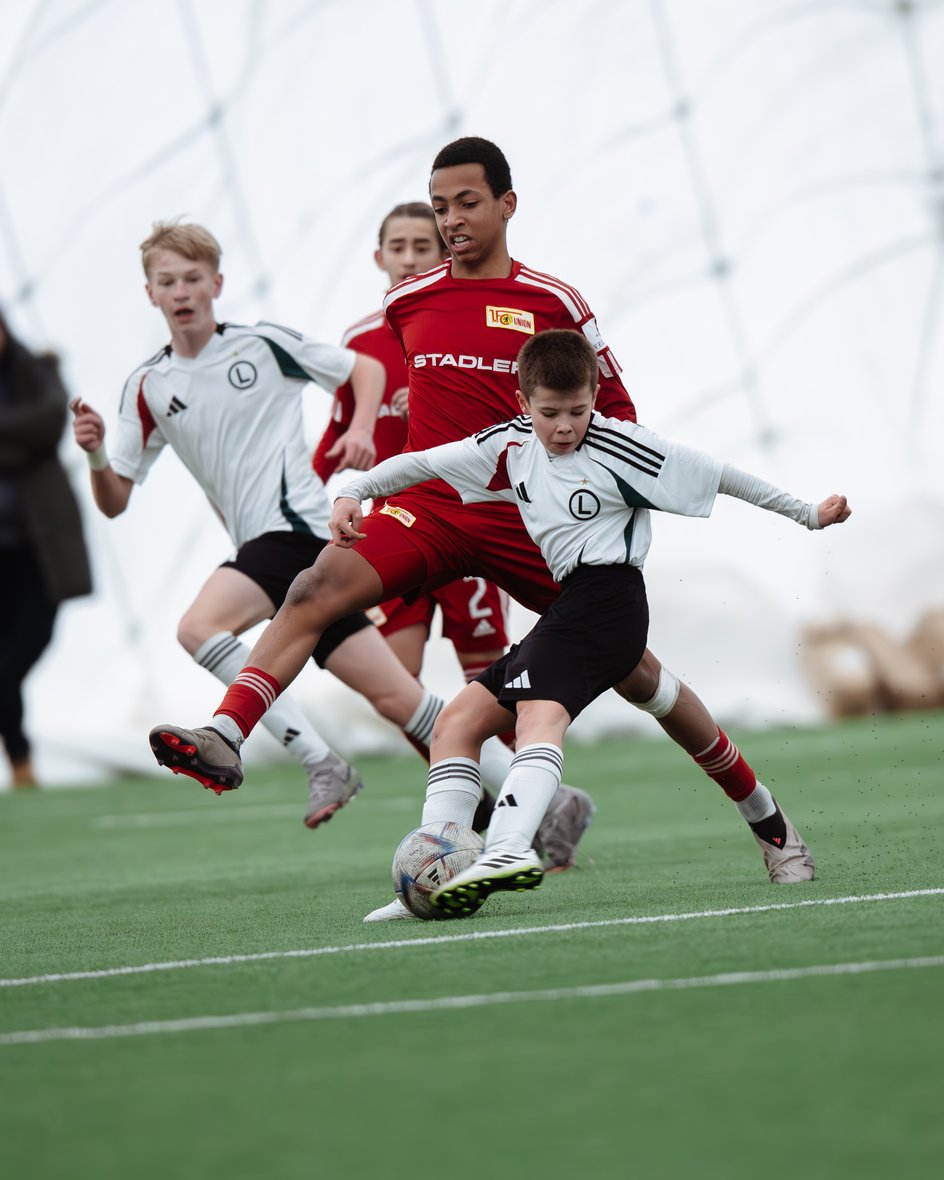
— A boy maturing late or at the end of the year has a challenge at the club every day. You could say he plays "against the wind". So he has to play faster, he has to have a mental challenge, he has to chase motorically. They have to push the boundaries all the time — says Marcin Dorna.
Of course, these are not new things, because history knows many such cases. After all, such players were Robert Lewandowski or Erling Haaland. Johan Cruyff was also such a player, who at the age of 16 was not able to cross from a corner kick into the penalty area.
Today we see only the effect, apart from that we are talking about outstanding players on a world scale. Who knows what would have happened if Lewandowski had not had such passion and determination. After all, he was written off in Legia Warsaw, he did not make it to the Mazovia squad. People like him were usually said to have simply broken through. Today, however, we can see in black and white that giving a chance to players maturing late and from the last quarter simply pays off, also in financial terms.
Of course, it is not said that the big ones have no chance of a career. Quite the opposite. Since we mentioned Lewandowski or Haaland, we should also mention Romelu Lukaku (and dozens of other players), who was bigger and stronger from a young age and that has never changed.
Below we show a graph based on research in Balkan academies. Here we have the structure of a team of 14-year-olds, where the majority are players who matured earlier, and information on how many players, in percentage terms, have reached professional football. And here, late-maturing players have a huge advantage.
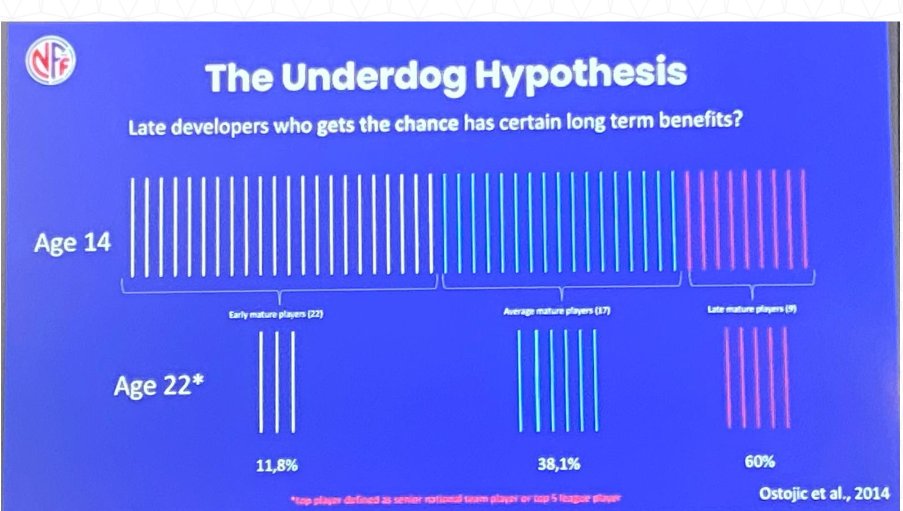
We are talking about two phenomena that are separate but similar. The first is late maturing players. Krzysztof Paluszek, known for running the Śląsk Wrocław and Zagłębie Lubin academies, once conducted biological age research with scientists. They measured 100 players at the age of 15. The oldest biologically were 18, the youngest 12. So theoretically it could happen that in the same match a young man competes with a child six years younger.
Patience is the keyThe second phenomenon is the effect of relative age. Statistically, there are the fewest children in football from the end of the year. They drop out at the very beginning, because as smaller and younger, they often lose the competition and get discouraged. Why? Because a player from December 2013 will be compared to a player from January 2013, although in fact his peer will be a boy from January 2014. Later, unfortunately, this is clearly visible, even in the statistics of players playing in professional football. Theoretically, a similar number of players from the first and fourth quarters should play football, but this is not the case.
Percentage of Polish players in Ekstraklasa by quarter:
| Quarter | Percentage of Polish players in Ekstraklasa |
| 1 | 33.1 |
| 2 | 27.8 |
| 3 | 21.5 |
| 4 | 17.6 |
— The key is patience. It is important to keep these players in the training process — emphasizes the PZPN director.
The first initiatives are emerging to provide children with information about their current form. For example, a year ago, in January 2024, the Masovian Football Association organized a team of players maturing late and from the end of the year. Most of these boys, for physical reasons, cannot count on being called up to the Masovia team, but compared to the boys from the younger age group, they looked phenomenal, as one of the project's initiators, Konrad Kociszewski, a coach of the leading Masovian club in the 2011 age group, Torpedo Mokotów, says.
— They looked great, even though most of them were much smaller than the boys who were theoretically younger by calendar, but biologically older in many cases. These were boys whom I observed in many matches in my year, where due to their parameters they really had to go into overdrive to compete in their clubs in their year. Many are in smaller centers and have a protective umbrella over them in the form of the environment and conscious coaches. These are great kids, for whom you have to wait and let them do what they do best, which is play football — says Kociszewski.
And here again we have the key word: "patience". Usually this is lacking, everyone wants to make a result "here and now", to become the district Guardiola or the district Klopp.
— After my observations of the 2011 age group, I can say that the problem exists. You only need to look at the match reports of the teams that have the possibility of selection, provincial teams or national teams. There are practically no boys from the last quarter there, even those who are not late maturers. Many talented players between the ages of 13 and 15 end their adventure with football because they do not play or play very little — says Kociszewski. And he emphasizes that "small" does not always mean "late maturer", because often a small player can be muscular and strong.
— Scouts and coaches will almost always choose the bigger and stronger one, because the pressure of results in large centers is so great that winning the Central Junior League becomes a goal above training the player. Of course, there are also smaller boys, but often these boys die in the competition, their talents are "burned out". Meanwhile, proportions should be maintained, there must be smaller and bigger boys in the team, which is beneficial for both. The coach must make an examination of conscience and decide whether he wants to win the youth champions league or train the player, because sooner or later these parameters equalize — adds the coach of the Warsaw club Torpedo.
For illustration, we show boys from the Torpedo club, who were on Sunday at the tests in FASE Szczecin. They are all from the same age group, the difference in height between the tallest and the shortest is exactly 30 cm.
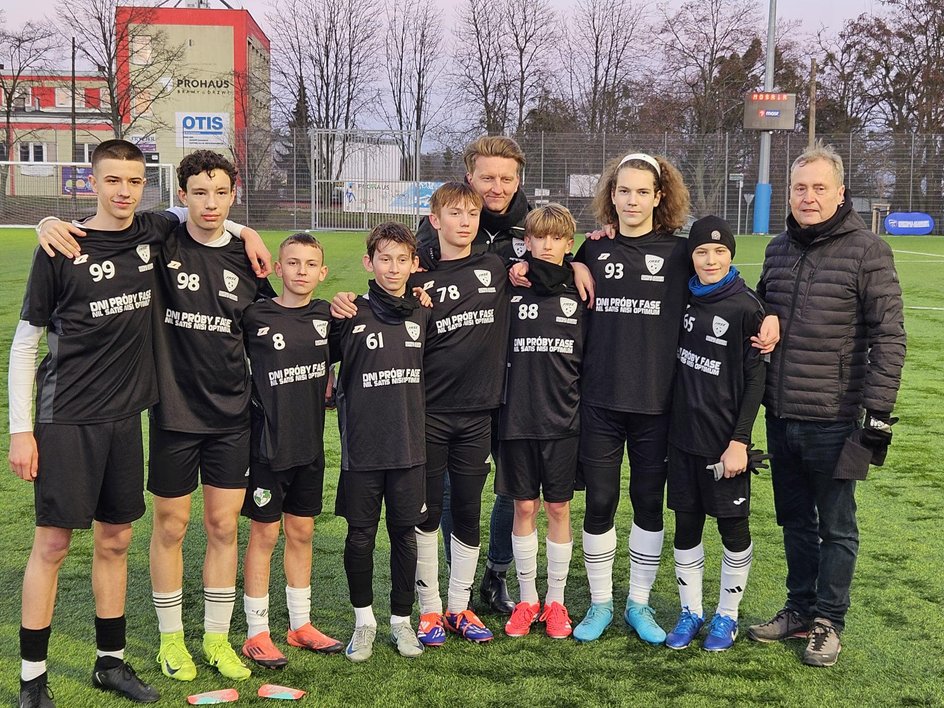
The problem is also noticed by Mariusz Paszkowski from the Brain Training System organization, former director of the Polish branch of Coerver.
It's getting harder and harder— Of course, there is a problem, and it is a broad one. Practically every week I have conversations with players who cannot break through in the club because they are currently physically weaker than their peers. The question of where they will bet on them is increasingly difficult for me to answer, because until recently there were several top centres in Poland that looked mainly at football potential. Now it is different — says Paszkowski.
— Despite the fact that such players often have a much higher football potential, clubs do not bet on them, because they look at the "here and now" and the result of the next match. Just observe our "flagship" CLJ league and see which players play and which sit on the bench or in the stands. Xavi once said one thing about height: "after all, football is played on the ground". Here, the whole Spanish approach immediately comes to mind, where skills are the most important thing — adds Paszkowski.
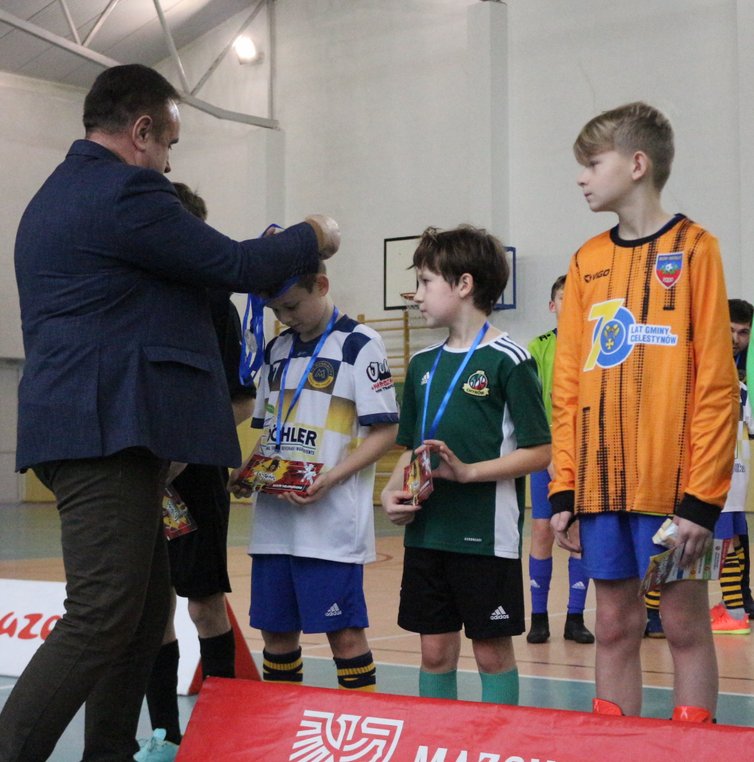
What is important, studies show that players from the end of the year achieve higher transfer amounts over time. At the moment, Adam Mickiewicz University in Poznań is examining the relationship between transfer amounts and quarter of birth and it is already visible that players born in the fourth quarter were worth a dozen or so percent more at their peak than those from the first quarter.
— It is important that such a boy, going through the training process, where he has a much harder time competing than his bigger colleague, should be better prepared to play senior football than one who shines among his peers in terms of physical condition and strength. He has to think more, make decisions faster and show more cunning to be able to compete. We can see how the "stars" of our CLJ bounce from 3-4 leagues because suddenly the physical aspect that made them stand out among their peers, and not necessarily among healthy strong men, is erased. We cannot cheat biology, there is no rule whether a potential future football star will mature early or late, but with these little wizards it is like this that they have to play a lot and even at the cost of a result in a smaller center or a lower league. Nobody will give them back the minutes on the pitch in later years — says coach Kociszewski, one of the originators of the team for late maturers in Mazovia.
And here again the subject of "patience" returns, which is too often lacking in Polish football. Because matches are won by big, strong boys.
— We have to bear in mind that in the training process we should look at the long term. I once individually coached a top player in Poland born in 2004. Practically every academy in Poland wanted to have him in their ranks, everyone was delighted with his skills. However, the league came and the boy did not play because he was much shorter and physically weaker than his peers (according to his biological age he was three years younger). Nobody expected that he would grow taller one day and his physical condition would improve significantly. Now he is 20 years old, he is over 180 cm tall, he is a strong player. He only spent his best years of development sitting on the bench, because the coaches looked at it in the short term — says Paszkowski.
Returning to the financial aspect, according to research by the Swiss federation, players born in the second half of the year, shortly after turning 19, achieve transfer values at the level of those from the first half of the year, and then much higher. All this suggests that it is about playing with a bigger, stronger, a constant challenge.
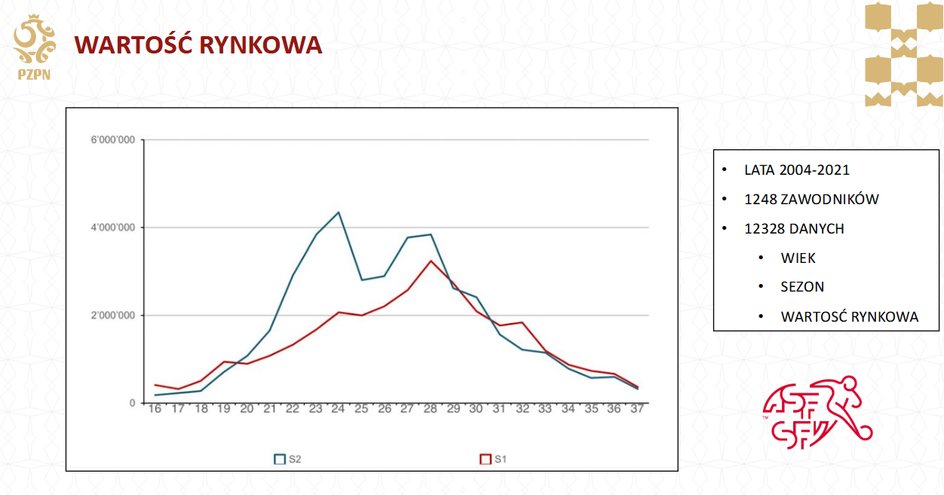
— Unfortunately, a large part of these players drop out, either because of their clubs or because they ultimately lack the motivation to "fight the system". Because how can you explain to a young player who is better than his peers that he is not playing just because he is biologically younger — says Paszkowski.
The Polish Football Association has a plan to invite boys from smaller clubs, often from the end of the year, who mature late, to the association's Young Eagles Academy programs much more often than before. The Belgians set an example here. In the match for 3rd place in the 2018 World Championships, as many as seven out of 11 players met these criteria.
Of course, the topic of late maturing players, although positive, can also be used for nefarious purposes. There are examples of great boys playing with younger ones. Such players "get results", thanks to which the coach can enjoy the fame of the local Mourinho. However, in such cases the child does not have a challenge, does not have to cross the boundaries, the rule is not implemented. The regulations allowing late maturing players to play in the younger age group were introduced for those who are unable to cope in their age category, which is why they get fewer minutes on the pitch. Not everyone understands this, but not all problems can be eliminated. The key here is the awareness of coaches.
Certainly, these studies and attempts undertaken by the Polish Football Association will not change the world of Polish football overnight, but they can send a signal to coaches and, above all, sports directors of clubs that patience and focusing on late maturing players and those from the end of the year is a policy that pays off greatly both sportingly and financially.
przegladsportowy




